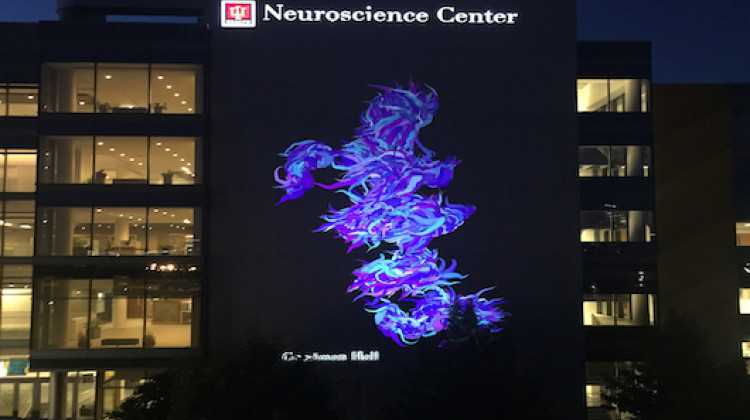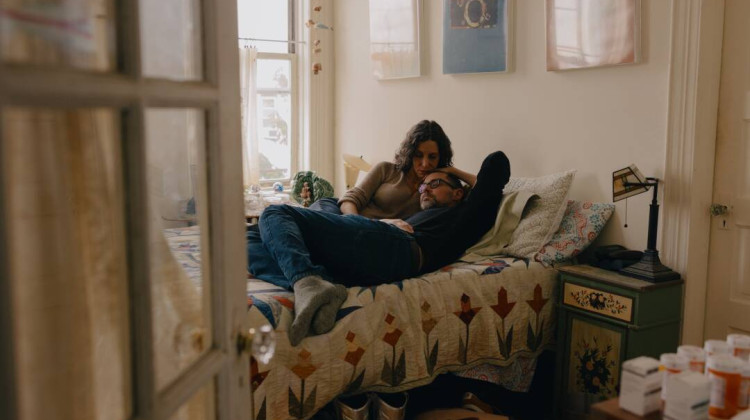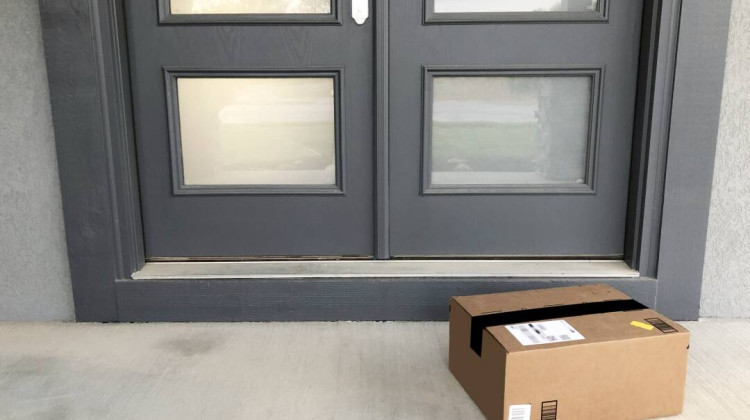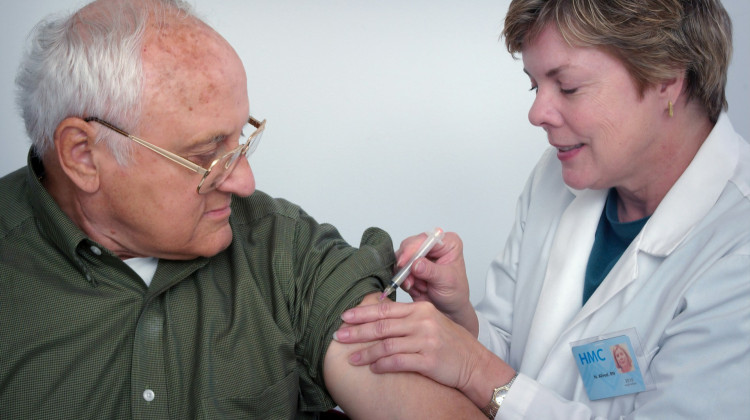
Some of the art work has been projected on the outside of the IU Neuroscience Center in downtown Indianapolis.
Courtesy of Indiana UniversityScientists and artists at Indiana University are working together to help patients with amyotrophic lateral sclerosis, or ALS, create art. The project combines art, therapy and technology and is a collaboration between researchers at Herron School of Art and Design, IU School of Medicine and Indiana University's Advanced Visualization lab.
ALS is a disease that gradually destroys the nerve cells in the brain and spinal cord used for voluntary movement. The IU project uses microprocessors to collect data from a patient’s subtle movements — like eye movement, breath or wiggling a finger. The data is translated into digital art that can be projected on walls.
Greg Hull, dean of Herron School of Art and Design and leader of the project, said the project helps give patients back some control.
“In some ways the patients are there, but they have no way to connect with the world around them,” he said. “So that became a real passion of mine was how to make tools that would allow them to engage and make visual work using less traditional tools.”
Some of the artwork has been projected on the outside of the IU Neuroscience Center in downtown Indianapolis. The initial phase of the project has been completed, but Hull hopes to revive the project soon — possibly expanding to different patient populations.
Contact reporter Darian Benson at dbenson@wfyi.org. Follow on Twitter: @helloimdarian.
 DONATE
DONATE







 Support WFYI. We can't do it without you.
Support WFYI. We can't do it without you.